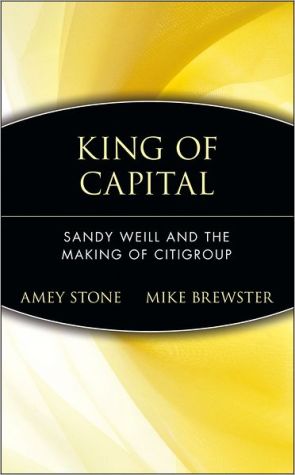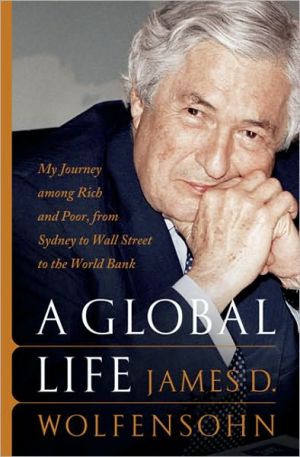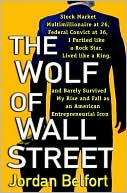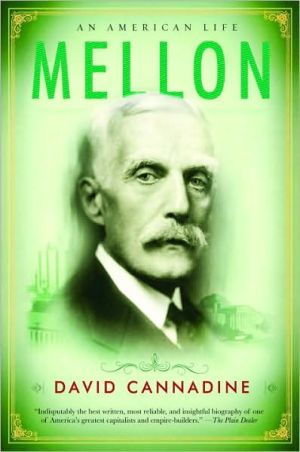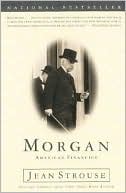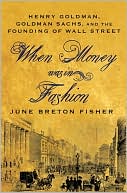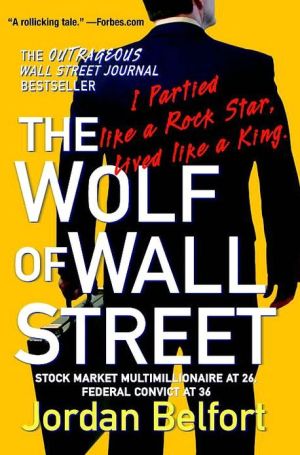King of Capital: Sandy Weill and the Making of Citigroup
THE CONSUMMATE DEAL MAKER\ THE ULTIMATE DEAL\ "Sandy Weill is probably the best deal maker on the planet. He is truly one of the leading business titans of our times."\ -Maria Bartiromo\ "Sandy's record speaks for itself. I can only dream of where Bear Stearns would be if he had stayed with us."\ -Ace Greenberg Chairman to the Executive Committee, Bear Stearns\ "King of Capital is about the extraordinary achievement of a man who climbed the highest pinnacles of the world of finance. Sandy...
Search in google:
The 1998 Travelers-Citicorp merger defied federal law, caused a dramatic CEO power struggle, and changed the landscape of the banking and insurance businesses forever–in other words, just another day at the office for Citigroup CEO Sandy Weill. Financial writers Amey Stone and Mike Brewster recount how a middle-class boy from Brooklyn transformed himself into the consummate corporate deal maker in the riveting King of Capital.The seeds of the historic Citigroup merger were sown early in Weill’s career. Working in the 1960s and 1970s with an all-star cast that included future New York Observer publisher Arthur Carter, future Broadway mogul Roger Berlind, and future SEC chairman Arthur Levitt Jr., Weill devised a winning blueprint for acquiring companies: buy a struggling firm with a prestigious name on the cheap, adopt its brand name, close under-performing divisions, integrate its operations into the existing infrastructure, and slash costs.In 1970, Weill’s modest, startup brokerage firm CBWL acquired troubled but venerable Hayden Stone, a firm many times its size. This acquisition set the foundation for the building of Weill’s prize gem, Shearson, named after Stone acquired Shearson Hamill. Ten years and fourteen deals later, Weill sold Shearson to American Express, establishing himself as one of the top chief executives of his era.Weill, though, could never be content as a "deputy dog" to Amex CEO James Robinson III. He left the company in 1985 and started over–essentially from scratch–as CEO of the struggling Commercial Credit, a modest firm based in Baltimore, Maryland, that in a little over a decade morphed into the Travelers Corporation. In 1998, Weill defied federal regulations by masterminding the merger of Travelers with Citibank. Stone and Brewster explain the sophisticated structure of this conglomerate and how Weill aggressively lobbied Congress and the President to ensure its legality. Stone and Brewster also offer insight into the evolution of Citigroup’s inner circle following a power struggle between Weill and co-CEO John Reed and how Citigroup plans to address the thorny issue of succession as Weill enters his seventies.Weill’s unprecedented achievements have been tempered by key personal and professional relationships, public defeats, and consumer criticism. However, with the unwavering support of Joan, his wife of more than forty years, Weill remains at the peak of his profession, forever on the lookout for the next megadeal. Discover how a disregard for the impossible and maniacal attention to the bottom line created a financial empire for the incomparable King of Capital. Publishers Weekly Weill has become the most daring dealmaker and assembler of companies on the business landscape, write Stone and Brewster in this insightful, occasionally hagiographic career biography of the Wall Street icon. While the authors did interview the Citigroup CEO, most of their primary sources are people who still work for him; thus, comments glorifying Weill abound. Stone (an associate editor at BusinessWeek Online) and Brewster (a former communications director at the global consulting firm KPMG) have compiled a comprehensive history tracing the career of Weill, now 69, through his days as a runner on Wall Street to his present position running one of the world's largest corporations. They tell how he started his own firm and describe his methods of merging his companies with larger firms, praising him as one who has more than redefined the deal'; he has come to embody it. The authors do criticize some of Weill's ideas, albeit gently, such as his unwavering belief that, despite evidence to the contrary, it is easy for a large financial company to cross-sell products. They do not explore, however, where Weill's drive comes from, how he has always wound up on top regardless of how many firms his companies have merged with, or the intricacies of his business strategies. For the past several years, Weill has been rumored to be writing his own book. Until then, this mediocre text will suffice. (June 14) Copyright 2002 Cahners Business Information.
\ The Past Is Gone.\ The Future is Limitless.
TimelinexiiiIntroduction: Meet Sandy Weill11The Past Is Gone. The Future Is Limitless152The Best and Brightest373Hayden Stone: The Prototype Deal714Building Shearson935Deputy Dog1236Starting Over1537Back in the Big Leagues1818Deal of the Century2179Weill on Top24510Citigroup, Post-September 11271Notes285Bibliography295Index297
\ From Barnes & NobleWhen CNN Money called Citigroup CEO Sandy Weill "perhaps the top corporate dealmaker of the modern era," they weren't indulging in journalistic hyperbole. Commentators who believed that Weill had culminated his career with the gargantuan 1998 merger of Travelers and Citibank were startled anew by his $31 billion purchase of Associates First Capital Corp. in 2000. Of the latter mega-buy, one analyst cooed, "The acquisition just fits in every facet. The most interesting thing is nobody else is looking at this sector. It's an absolute coup on Citigroup's part." What makes Sandy deal and why he's so good at it have been hot topics for years in business circles. King of Capital tells his story, explaining how a bullied Bensonhurst kid became the brains behind one of the world's largest conglomerates.\ \ \ \ \ Publishers WeeklyWeill has become the most daring dealmaker and assembler of companies on the business landscape, write Stone and Brewster in this insightful, occasionally hagiographic career biography of the Wall Street icon. While the authors did interview the Citigroup CEO, most of their primary sources are people who still work for him; thus, comments glorifying Weill abound. Stone (an associate editor at BusinessWeek Online) and Brewster (a former communications director at the global consulting firm KPMG) have compiled a comprehensive history tracing the career of Weill, now 69, through his days as a runner on Wall Street to his present position running one of the world's largest corporations. They tell how he started his own firm and describe his methods of merging his companies with larger firms, praising him as one who has more than redefined the deal'; he has come to embody it. The authors do criticize some of Weill's ideas, albeit gently, such as his unwavering belief that, despite evidence to the contrary, it is easy for a large financial company to cross-sell products. They do not explore, however, where Weill's drive comes from, how he has always wound up on top regardless of how many firms his companies have merged with, or the intricacies of his business strategies. For the past several years, Weill has been rumored to be writing his own book. Until then, this mediocre text will suffice. (June 14) Copyright 2002 Cahners Business Information.\ \ \ Library JournalSanford Weill, known as a ruthless deal-maker and the creator of successful businesses like Citigroup, has revolutionized the banking world and become a legend on par with Warren Buffett and Jack Welch. Stone and Brewster, both journalists and editors of online business publications, discuss Weill's successful strategies and tactics through case studies and anecdotes from his professional and personal life. They cover his entire career, including his violation of federal law when in 1992 he merged banking and insurance businesses. He later lobbied the President and Congress to deregulate the financial services industry. In a power struggle in 2000, he ousted his co-CEO, John Reed, at Citigroup. The chronicle of his ascent to executive greatness demonstrates the opportunities he seized that others could not or would not dare to take in a world of financial intrigue and globalization. This candid business biography does not critique Weill's more questionable actions but instead serves to demonstrate the need for determination, self-confidence, and strong management skills to become an outstanding CEO in today's global business world. Recommended for business collections. Susan C. Awe, Univ. of New Mexico, Copyright 2002 Cahners Business Information.\ \ \ \ \ Soundview Executive Book SummariesHow A Deal Maker Built The World's Largest Financial Services Firm\ Citigroup's Sandy Weill is a legendary deal maker. A new biography, King of Capital by Amey Stone and Mike Brewster, describes how he became a billionaire business titan by creating successful companies out of smaller, sometimes failing firms; creating successful new products where none previously existed; and making deals that no one else thought were possible. He is also responsible for changing the landscape of the banking world and insurance business forever when he created Citigroup in 1998, the world's largest financial services firm. \ When Weill was 65, instead of retiring, he set about creating the epic merger between Travelers Group and Citicorp. Soon after, he was aggressively lobbying Congress and the president to pass the Financial Services Modernization Act to make the deal legal. With the passing of this piece of legislation a little more than a year later, companies could legally sell insurance, issue securities and provide banking services under a single umbrella for the first time.\ King of Capital also describes how Citigroup CEO Sandy Weill is not a universally loved figure. Despite the hundreds of millions of dollars he has donated to charities, there are many former partners and underlings who seem to have mixed feelings about the man who is said to have fired more friends than some people ever make, and is criticized as being an "abrasive and insensitive" leader.\ A Titan's Modest Roots\ Weill grew up in a modest house in Bensonhurst, Brooklyn, with his parents, sister, aunt, uncle and grandparents who had immigrated from Poland. While living there, he watched his father and grandfather build a successful dressmaking business that lasted for 40 years. Weill learned discipline and academics while at Peekskill Military Academy, where a clear system for rewarding accomplishment shaped him to become a successful student of government at Cornell. After graduating, he had a slow start as a low level messenger on Wall Street, but was soon working as a broker. Five years later, in 1960, he started his own firm; his partners were some of the most extraordinary talents available.\ One of Weill's first major deals was the 1970 purchase of the 100-year-old brokerage firm Heyden Stone, which was moments away from being dissolved for insolvency. This firm was 10 times the size of Weill's firm. The new brokerage firm continued to follow this prototype: Buy a struggling company with a prestigious name for cheap, adopt its brand name, close weak divisions, integrate its operations into the existing infrastructure, and cut costs.\ Three years later, Weill was the CEO of Heyden Stone. Next, the firm purchased Shearson Hamill, which doubled the size of the company. By 1979, Shearson Hayden Stone purchased Loeb Rhoades, which doubled its size again and made it Shearson Loeb Rhoades.\ After 14 deals, Weill's original brokerage firm had become Shearson, the second largest brokerage firm on Wall Street. Its focus, which started as retail, had expanded to research, investment banking and building the business. By the time he sold Shearson to American Express in 1981, he was ready to step into AmEx as a top manager.\ Time to Quit\ Now a multimillionaire, he was not satisfied as an underling to the company's CEO, and remained unhappy even when he was named the company's president in 1983. Two years later he quit American Express to seek new challenges.\ When he took the helm of the failing customer credit company Commercial Credit in 1986, nobody believed he could do much with it. Over the next 12 years, he turned around that company and used it as a base for building a financial services conglomerate that would rise above its competitors. In 1988, Weill purchased Primerica, which owned the retail brokerage firm Smith Barney, which returned him to his roots in the securities business. Over the following years, Weill acquired a percentage of Travelers Insurance and bought back the struggling Shearson from American Express. By 1997, Weill had acquired the rest of Travelers and the investment bank Solomon Brothers.\ Weill soon dwarfed these mergers with a $70 billion deal that merged Citicorp and Travelers, and placed him on top with a co-CEO who would last only two years before being forced out in a boardroom showdown.\ In 2001, Weill's Citigroup was worth more than $1.5 trillion. With profits near $15 billion, Weill's company is one of the most profitable corporations in the world.\ Why Soundview Likes This Book\ King of Capital is a gripping tale of an amazing man who was able to rise above controversy and competition and attain a position of power and influence equalled by few others. Citigroup's current financial problems does not diminish the strength, determination, perseverance and deal-making skill of this visionary CEO. Copyright (c) 2002 Soundview Executive Book Summaries\ \ \
